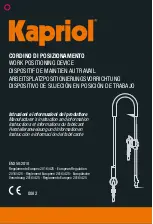
36
NexWave
Warnings
Transcutaneous Electrical Nerve Stimulation (TENS)
Warnings (Continued)
·
Maximum peak output voltage (500 Ω load) = 50 V
·
Maximum peak output current (500 Ω load) = 100 mA
·
Maximum peak output voltage (1 KΩ load) = 100 V
·
Maximum peak output current (1 KΩ load) = 100 mA
·
Maximum peak output voltage (2 KΩ load) = 100 V
·
Maximum peak output current (2 KΩ load) = 50 mA
·
Pulse width range: 120
-
300 µs
·
Pulse frequency range: 1
-
125 Hz
·
Maximum RMS voltage (500 Ω load) = 7.07 V
·
Maximum RMS current (500 Ω load) = 14.14 mA
·
Maximum output power (500 Ω load) = 0.10 W per channel
·
Maximum RMS voltage (1 KΩ load) = 14.14 V
·
Maximum RMS current (1 KΩ load) = 14.14 mA
·
Maximum output power (1 KΩ load) = 0.20 W per channel
·
Maximum RMS voltage (2 KΩ load) = 14.14 V
·
Maximum RMS current (2 KΩ load) = 7.07 mA
·
Maximum output power (2 KΩ load) = 0.10 W per channel
·
The safety of TENS devices for use during pregnancy or birth has not been
established.
·
This device is not effective for pain of central origin. (This includes headache.)
·
This device should only be used under the continued supervision of a physician.
·
This device does not have curative value.
·
This device offers symptomatic treatment such as suppressing the sensation of
pain which would otherwise serve as a protective mechanism.
·
The user must keep this device out of the reach of children.
·
Electronic monitoring equipment (such as ECG monitors and ECG alarms) may not
operate properly when this device is in use.
·
The long
-
term effects of chronic electrical stimulation are unknown.
·
Stimulation should not be applied over the carotid sinus nerves, particularly in
patients with known sensitivity to the carotid sinus reflex.
·
Stimulation should not be applied over the neck or mouth. Severe spasm of the
laryngeal and pharyngeal muscles may occur and the contractions may be strong
enough to close the airway or cause difficulty in breathing.
13
NexWave
Preprogrammed Modes
Interferential Current (IFC)
Mode
Description
Low
-
High
The frequency of channel 2 sweeps between 4001 Hz and 4128
Hz every 15 seconds, while the channel 1 frequency remains
fixed at 4000 Hz.
Low
The frequency of channel 2 sweeps between 4001 Hz and 4010
Hz every 15 seconds, while the channel 1 frequency remains
fixed at 4000 Hz.
Combo
Combo consists of three 2 minute cycles which repeat over the
duration of the treatment.
1st cycle
-
Low Mode: as described above.
2nd cycle
-
High Mode: like Low Mode, but channel 2 sweeps
between 4064 Hz and 4128 Hz.
3rd
cycle
-
Muscle Mode: The frequency of channel 2 is fixed at
4064 Hz, and the frequency of channel 1 is fixed at 4000 Hz.
Both channels are cycled on and off simultaneously at 6 second
intervals.
Transcutaneous Electrical Nerve Stimulation (TENS)
Mode
Description
Sweep
The frequency is decreased linearly from 125 Hz to 11 Hz over a
4 second span. During this time, the pulse width is increased
linearly from 120 µs to 300 µs. Then the frequency is decreased
from 10 Hz to 1 Hz over a two second span. The pulse width is
constant at 300 µs. Then the frequency is increased linearly
from 1 Hz to 10 Hz over a two second span. The pulse width is
constant at 300 µs. Then the frequency is increased linearly
from 11 Hz to 125 Hz over a four second span. During this time,
the pulse width is decreased linearly from 300 µs to 120 µs.
Low frequency
Modulation
Frequency sweeps between 66.7
-
100 Hz and back again over
12 seconds. Pulse width linearly decreases to 150 µs when
frequency is sweeping up and increases back up to the default
pulse width of 300 µs when frequency is sweeping down.
High frequency
Modulation
Same as Lmd, but with a frequency shift interval of 2 seconds.
Summary of Contents for NexWave
Page 2: ...2 47...










































